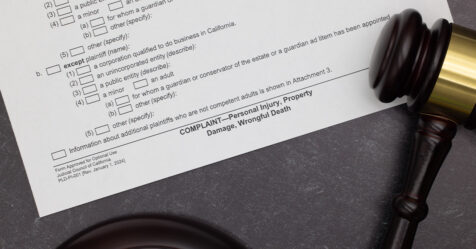We don’t give them much thought, but there is a lot more to safety signs than many jansan professionals may know. For instance, did you know that a safety sign should comply with both U.S. Occupational Safety and Health Administration (OSHA) and American National Standards Institute (ANSI) standards? For instance, OSHA requirements state that certain words such as “danger,” “caution,” and “safety” be used on the sign.
ANSI has similar requirements, but its guidelines take things a step further. ANSI standard Z535, for instance, requires a universally understood pictogram to be on the sign.
Further, safety signs are available in different materials. Signs are composed of plastic, aluminum, and fiberglass. Most of the safety signs cleaning professionals will likely use are made of a high-quality, yet cost-effective plastic. These signs are easy to pick up and move around, and workers can stack them, which takes up less space in a janitorial closet. These signs also have a proven track record with regard to durability.
Understanding the Terminology
Sometimes a cleaning professional will meet with a distributor or go online to select a safety sign without paying much attention to the wording on the sign. For instance, one sign may read, “Warning,” while another says, “Caution.” Aren’t these two signs delivering essentially the same message?
According to ANSI and OSHA standards, they are not. The sign selected and its wording should comply with the situation in which it is needed. For example:
Caution. This message indicates that a hazardous situation may be present that could lead to an accident or injury. A “caution” sign is usually in a yellow color and is typically the most commonly used sign by cleaning professionals.
Warning. This message is somewhat less urgent and should be used when there is a possibility, but not a high probability, of injury or death. It can be used to protect users from harming themselves or the facility they are using. In most cases, a warning sign will be orange.
Danger. This message is far more urgent and applies only to extreme situations where there is a high probability of death or serious injury. It should not be used to indicate the possibility of property damage; it should be used only in personal injury situations. These signs are typically red.
Two other safety signs used less frequently, at least in the professional cleaning industry, are signs indicating “notice” and “emergency.” Facilities often use “notice” signs, which usually come in a blue color, to remind building users to comply with a specific company policy. Green “emergency” signs are employed to indicate procedural instructions and reminders in a workplace setting.
As mentioned earlier, along with the appropriate wording, ANSI requires that signs include a pictogram. For instance, if we place a “Caution” sign in an area where a slip-and-fall accident is possible, it should have a drawing of someone falling. Everyone can understand that pictogram no matter their native language.
Best Practices and Maintenance
Along with placing warning signs when and where needed, one of the most important things that jansan professionals should know is when to remove a safety sign. Very often, facility personnel place a safety sign on a floor following cleanup of a spill, only to forget about it later. If this happens on a regular basis, warning signs can lose their meaning and effectiveness. If they do not know whether the sign indicates a current safety issue or something that occurred a week ago, building users may start to ignore all safety signs, which could quickly lead to a serious—and dangerous—situation.
As to when to place a cautionary safety sign, locate one wherever a potential hazard exits: a spill on a floor, a carpet that has buckled, loose floor tiles, something that has fallen on the floor, and when floor care maintenance is in process.
When cleaning professionals are damp mopping a floor, for instance, they will place one sign directly ahead of where they are working, and that’s all. The first issue in this instance is where they place that sign; rather than placing it right before the work area, they should position it several feet ahead of the work area to give building users ample time to take an alternative route.
Further, it’s far better—and safer— to place two or more signs in a manner that strategically outlines the work area. Not only does this further highlight that building users should be careful, but it helps ensure that occupants do not walk on any part of the work area or interfere with the cleaning work in process.
Finally, facility professionals should clean safety signs and maintain them in good condition. View safety signs as a reflection of both your concern for building occupant safety as well as your professionalism. A clean, well-maintained safety sign becomes an image of your quality service.


